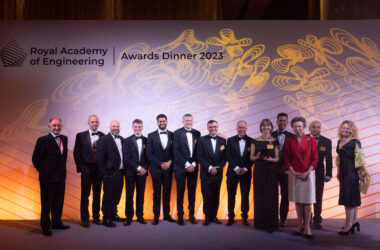In what could be a significant step towards maritime decarbonization, Norwegian shipyard Myklebust Verft has been selected to construct two innovative hydrogen-powered passenger ferries for transport company Torghatten Nord.
Upon delivery in 2026, these vessels will be the world’s largest hydrogen-fueled ships. They showcase Norway’s expertise in sustainable shipbuilding and commitment to advancing clean hydrogen infrastructure.

The 117-meter-long ferries, designed by The Norwegian Ship Design Company, will each accommodate 599 passengers and 120 vehicles. Operating at an average speed of 17 knots, they will navigate the challenging waters of the 278-kilometre Vestfjordstrekninga fjord route in the Arctic Circle, connecting Bodø with the islands of Røst, Værøy, and Moskenes.
Key to the vessels’ design is an onboard hydrogen storage unit that will feed gas to fuel cells, generating electricity for both propulsion and auxiliary systems. This is expected to reduce CO2 emissions on the route by approximately 26,500 tons each year. While the ferries will operate on green hydrogen at least 85% of the time, they will also feature biodiesel backup systems to ensure reliable service.
Myklebust Verft will construct the vessels, with Torghatten Nord as the owner and operator. The Norwegian Ship Design Company has developed a unique design, which received approval in principle from the classification society Lloyd’s Register in August 2022. Other key partners include systems integrator SEAM and hydrogen supplier GreenH. The Norwegian Maritime Authority will flag the vessels upon completion.
The Vestfjordstrekninga ferry might hold broader implications for adopting hydrogen power in shipping, particularly in the short-sea segment. As the largest hydrogen-powered ships to date, these ferries will demonstrate this zero-emission fuel’s technical feasibility and commercial viability on a substantial scale.
Myklebust Verft is now planning the construction phase and aims to deliver hydrogen-powered ferries in 2026.
While challenges remain in scaling up hydrogen production and distribution infrastructure, projects like the Vestfjordstrekninga ferries do offer evidence of real world progress.
TLDR:
- Norway’s Myklebust Verft to build the world’s largest hydrogen-powered ferries
- 117-meter vessels to carry 599 passengers and 120 vehicles each
- Innovative design features onboard hydrogen storage and fuel cells
- The project brings together key players in the Norwegian maritime industry
- Ferries to demonstrate the viability of hydrogen power for short-sea shipping




